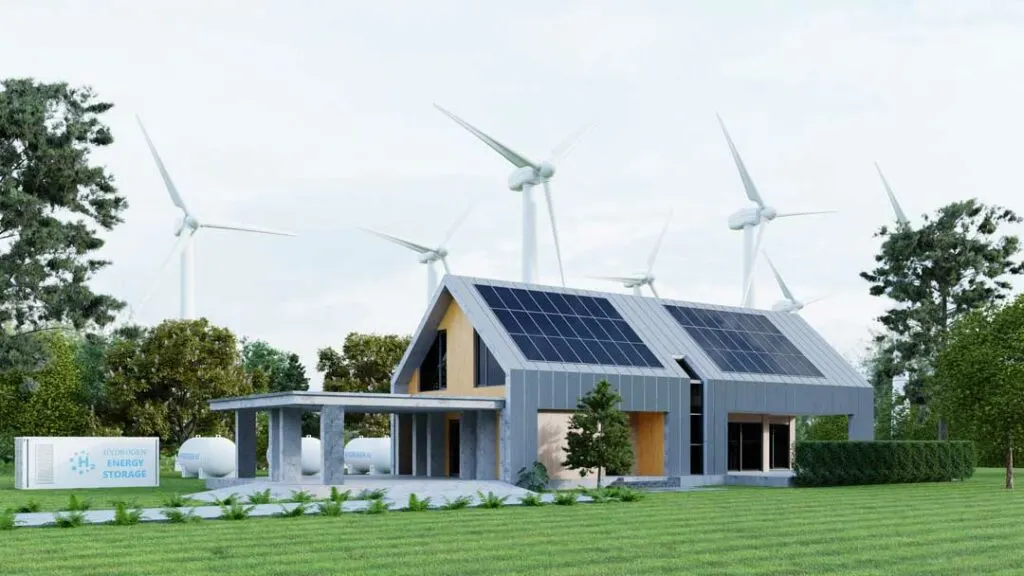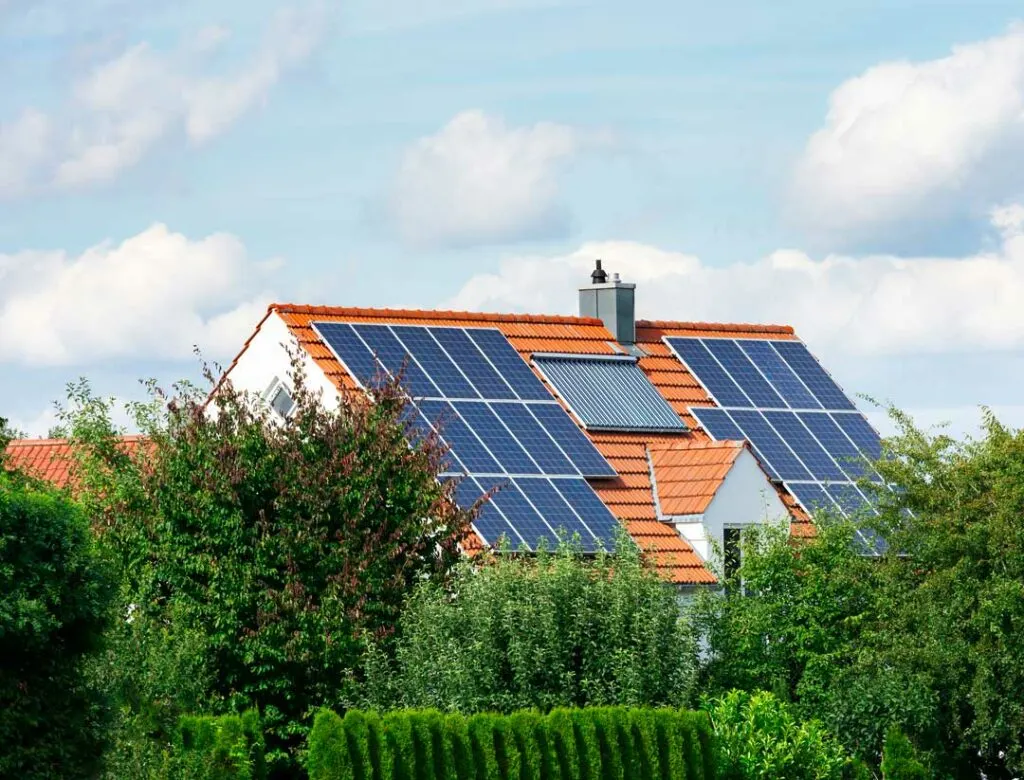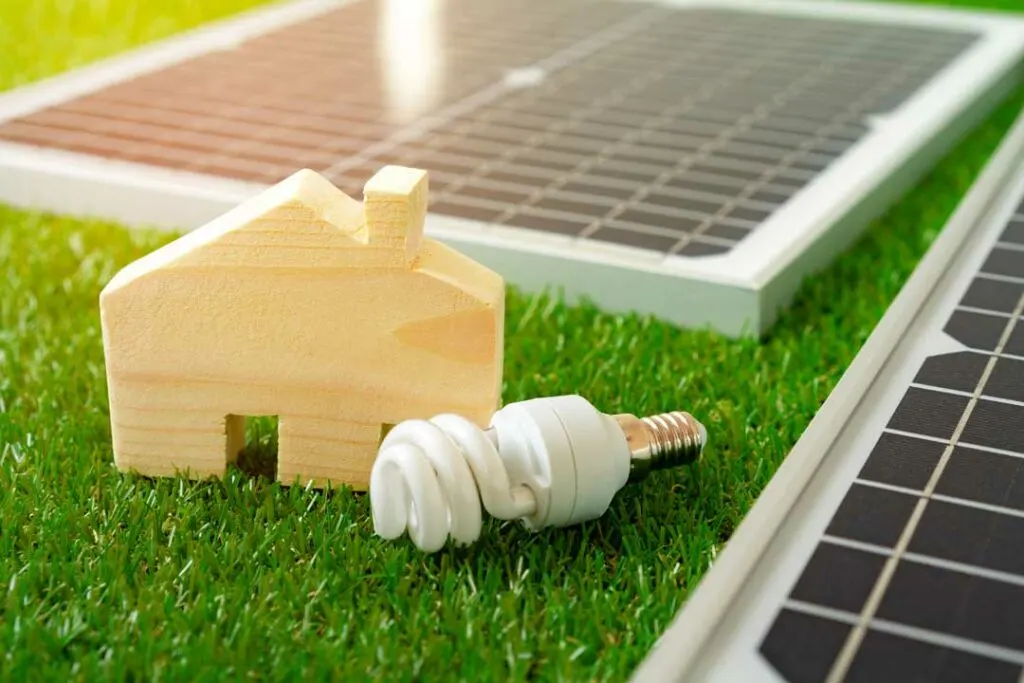Are rising energy costs draining your wallet? Discover how green energy solutions can save you money and create a sustainable home.
Rising energy costs and environmental concerns make it the perfect time to embrace green energy solutions. Transforming your home into an energy-efficient haven reduces expenses and protects the planet.
This guide explores how sustainable energy upgrades—like solar panels, smart systems, and better insulation—can future-proof your home. Take control of your energy use while creating lasting value for future generations.
Green Energy Solutions for Homes: A Guide to Sustainability

Wouldn’t it be great to transform your home into an energy-efficient powerhouse while saving money and protecting the planet?
In 2024, the US Department of Energy is launching an ambitious $8.8 billion Home Energy Rebates program. This groundbreaking initiative aims to help families significantly reduce their household energy expenses.
Homeowners can now access substantial financial incentives for green upgrades. Retrofits achieving over 20% energy savings qualify for significant rebates, with even greater rewards for projects exceeding 35% efficiency improvements. These are more than upgrades, they represent long-term investments in your home’s overall value.
By embracing sustainable energy solutions, you’re doing more than reducing bills. You’re shrinking your carbon footprint, supporting a global movement towards greener living, and creating lasting value for future generations. The future of home efficiency starts now—are you ready to take the first step?
Sustainable Energy to Usher Energy Independence in an Unstable World

Energy costs have been rising steadily, making it more expensive to power the comforts of modern living. S&P Global Commodity Insights reveals US household electricity prices surged 21.9% between 2018 and 2023. In comparison, cumulative inflation during the same period was 22.2%, illustrating that energy costs are climbing faster than many other expenses.
Renewable energy sources, such as solar and wind power, offer a solution by providing long-term savings after the initial investment. Solar installations were projected by the EIA to account for nearly 38% of the US electricity capacity from 2023 to 2024.
This projection highlights the rapidly accelerating adoption of solar energy across the United States. Homeowners who switch to renewables often see significant reductions in their reliance on traditional utilities. By generating surplus energy, they can even sell excess power back to the electrical grid.
Beyond financial benefits, the environmental implications of sustainable energy cannot be overstated. Adopting renewable solutions directly reduces these emissions, making a meaningful environmental impact. Adding to the appeal are financial incentives like the Inflation Reduction Act. It offers tax credits covering up to 30% of solar installation costs, reported the EPA. This makes the shift to renewable energy more accessible and affordable.
Are There Renewable Energy Options for Homes?
Homeowners today have various renewable energy options, each with unique benefits. Solar panels are the most popular choice, with 4.4 million U.S. homes using them, as per data from Statista. Their installation costs have dropped in the past ten years. Hence, such panels have become easily accessible. Furthermore, for those in windy areas, small-scale wind turbines are a great alternative.
Recent years have seen a dramatic reduction in wind power costs, driven by advancements in technology and economies of scale. Onshore wind, for example, experienced a 5% cost reduction, with its global average levelized cost dropping to $0.033/kWh.

The significant decline represents nearly half the cost of traditional fossil-fuel-generated electricity. This trend has continued to make renewable energy, particularly wind, more competitive with traditional power sources.
Besides, geothermal energy is a great option that can reduce energy dependence for heating and cooling. Homeowners can slash heating and cooling energy consumption by 25-50% using heat pump technology. By leveraging these systems, they can also claim up to $2,000 in valuable tax credits.
The Invisible Energy Thieves in Our Homes
Energy loss is one of the most common issues in traditional homes which can fairly cripple your energy independence efforts. Insulation is a crucial factor in this.
One often-overlooked culprit is poorly installed corner trim and seals around windows and doors. These small openings create invisible channels that let warm air slip out during winter and cool air escape during summer. Eventually, it forces your cooling and heating systems to work harder.
Another significant area contributing to energy loss is air leakage through walls and ceilings. Cracks and gaps, especially around plumbing, wiring, and ducts, can lead to substantial energy wastage. Sealing these leaks with spray foam or caulk can improve a home’s energy efficiency. Properly addressing home air gaps helps keep warm or cool air precisely where it belongs. This strategic approach reduces HVAC system strain, leading to significant energy bill savings.

Windows along with doors play a major part. Double-glazing, weatherstripping, and sealing gaps are all effective measures to block unwanted air exchange. Fitted trims, made from energy-efficient materials, can make a significant difference. Belco Forest Products advises using soft pine wood trims for their durability and sustainability. These are cost-effective and can go a long way in insulating your home.
Ensuring your attic, walls, and floors are well-insulated prevents heat transfer, keeping your home comfortable year-round and reducing energy consumption.
Finally, switching to energy-efficient appliances is necessary to curb wastage. Substituting outdated equipment with energy-star-rated models ensures that your household uses power more effectively.
Integrating Smart Home Systems

Smart home technology has emerged to be a cornerstone of modern energy efficiency. Beyond just automation, smart devices can significantly reduce energy consumption and enhance the performance of your green upgrades.
- Smart thermostats: Devices like Nest and Ecobee can learn your preferences and adjust heating or cooling settings accordingly. This way, it ensures energy isn’t wasted when you’re away or asleep.
- Smart lighting: LEDs that automatically adjust based on time of day or occupancy can reduce electricity consumption.
- Energy monitoring systems: Some devices track the electrical signals of each appliance and offer data on energy use down to the second. This allows homeowners to identify energy-intensive habits or specific devices that may be draining power unnecessarily. For instance, users can spot energy-hogging appliances like old refrigerators or air conditioners and adjust usage patterns.
Considering these systems makes it easier for homeowners to optimize their green energy solutions and keep track of energy savings. In the long term, this integration can lead to more personalized energy conservation strategies.
FAQ
Future-proofing means making your home energy-efficient and preparing for long-term sustainability. It involves integrating renewable energy systems and minimizing energy waste to save money and reduce environmental impact. For this, you can implement advanced insulation, and smart home systems for lower utility bills and increased comfort.
Bifacial solar panels, which capture sunlight from both sides, are gaining popularity for their increased energy output, particularly in snowy regions. Flexible, lightweight panels are another breakthrough, making solar energy more portable and suitable for unconventional applications. Additionally, tandem solar cells, which combine perovskite with traditional silicon, offer higher efficiency and lead to compact and powerful systems.
Yes, governments provide rebates, grants, and tax credits to facilitate the consideration of renewable energy. The U.S. Department of Energy’s Clean Energy Infrastructure Program allocates $97 billion to fund the deployment of clean energy technologies. Additionally, the Solar for All initiative provides $7 billion in grants to increase access to affordable solar energy for low-income households.
Future-Proof Your Home: Embrace Renewable Energy Solutions
Embracing green energy solutions is a critical step toward sustainability and long-term savings. Upgrades like renewable energy systems, smart home technology, and improved insulation reduce energy waste and enhance comfort.
With government incentives and advanced technologies making sustainable solutions more accessible, there’s no better time to future-proof your home. Assess your energy needs, explore renewable options, and start building an energy-efficient future today.

Jessi is the creative mind behind The Coffee Mom, a popular blog that combines parenting advice, travel tips, and a love for all things Disney. As a trusted Disney influencer and passionate storyteller, Jessi’s authentic insights and relatable content resonate with readers worldwide.
